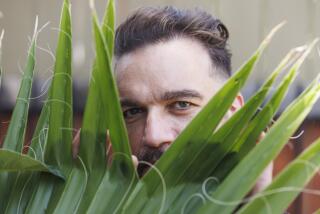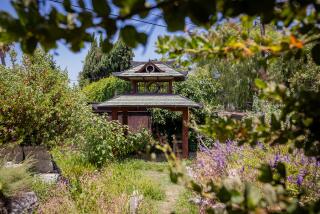Fabricated Wetlands Are ‘Cool,’ Students Say
- Share via
As Felice Giorgetti looked out over the fledgling Seagate Wetlands, he expressed his amusement at the idea of a fabricated “natural” habitat.
But his tone turned serious when he talked about the importance of the small valley, which has begun to thrive amid the rumble of tractors grading land for a housing development.
“If nobody tried to build stuff like this, it wouldn’t exist anymore,” said Felice, 17, of Huntington Beach.
He is one of several students from Valley Vista and Huntington Beach high schools who have visited the Seagate Wetlands in the past month to help monitor tree growth and wildlife.
The wetlands, in the middle of the Seagate housing development planned near Ellis Avenue and Gothard Street, are being restored as part of an agreement between PLC Land Co. and the city.
The four-acre project began five years ago and is now starting to attract wildlife, said Elisha Back, an environmental manager with John Tettemer & Associates in Costa Mesa, which is overseeing the restoration.
The wetlands, formerly an oil field, were planted with willow and sycamore trees and provided with an irrigation system. In about two years, irrigation will end as the area becomes established and can thrive on its own, Back said.
Until then, Back will continue to monitor the wetlands’ progress every two weeks with help from the high school students. Together they measure tree growth, identify birds and take pictures.
“It’s like watching the grass grow,” Back acknowledged. “It’s not that exciting. But it shows that developers aren’t all bad. This is a lot better than what was here before. I think kids need to understand that.”
Students on duty last week took turns using binoculars to spot birds and brought out a long tape measure to check saplings’ growth.
Felice was not the only student who saw something incongruous in wetlands surrounded by homes. “It’s kind of weird that it’s man-made and there’ll be houses up there,” said Lauren Endicott, 16, of Huntington Beach. “It’s kind of cool, though.”
Another student, Ray Marshall, 18, of Huntington Beach, explained that the cool part is learning about the habitat and how it was created.
“They recycle water so they don’t really waste it, and it cleans itself,” he said. “And that it’s a man-made natural reserve is really cool.”
More to Read
Sign up for Essential California
The most important California stories and recommendations in your inbox every morning.
You may occasionally receive promotional content from the Los Angeles Times.










